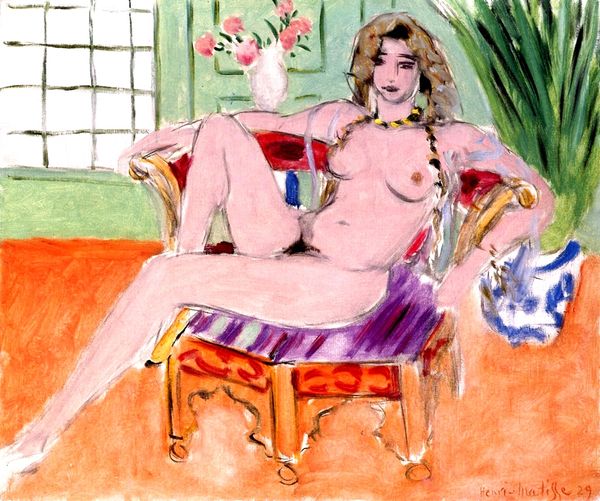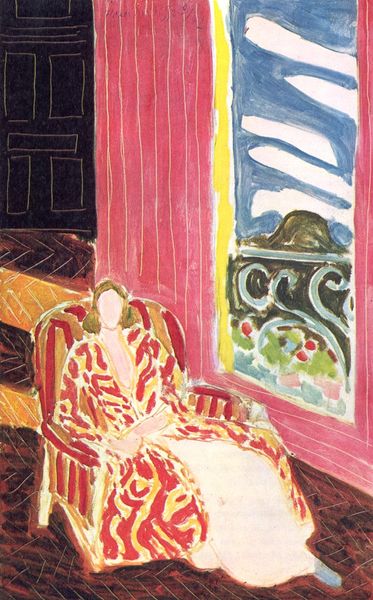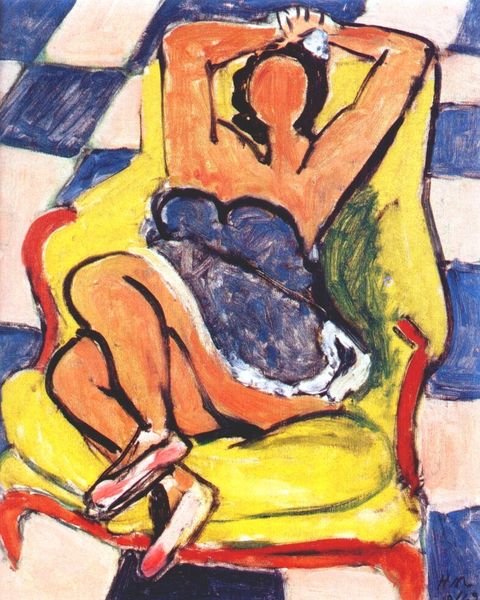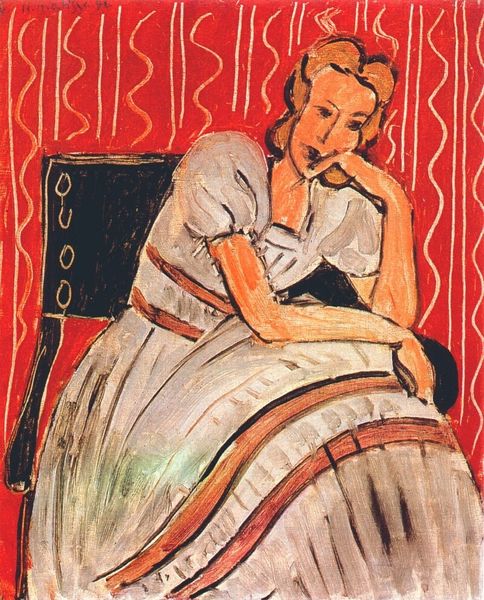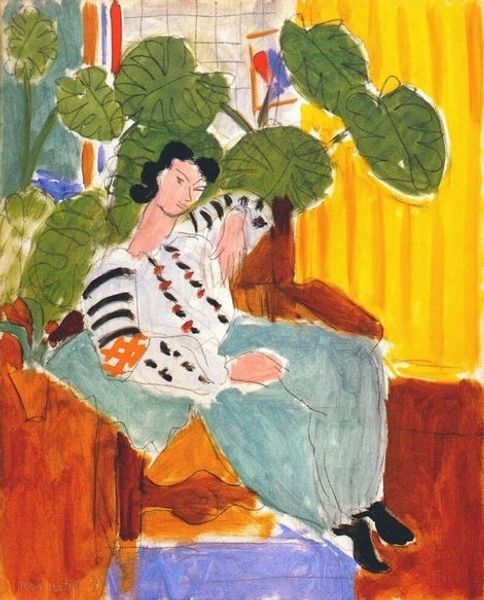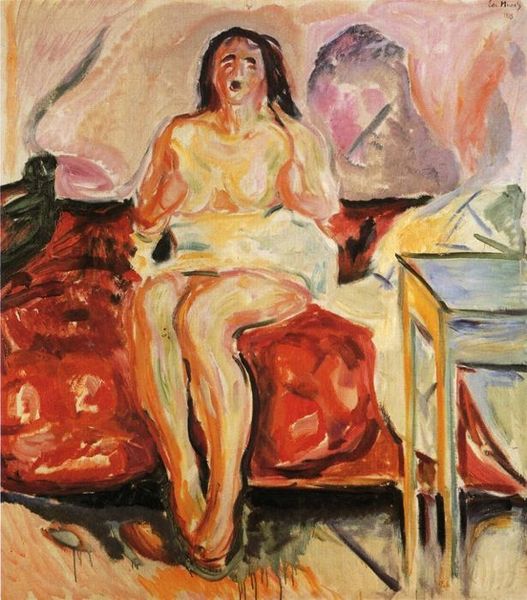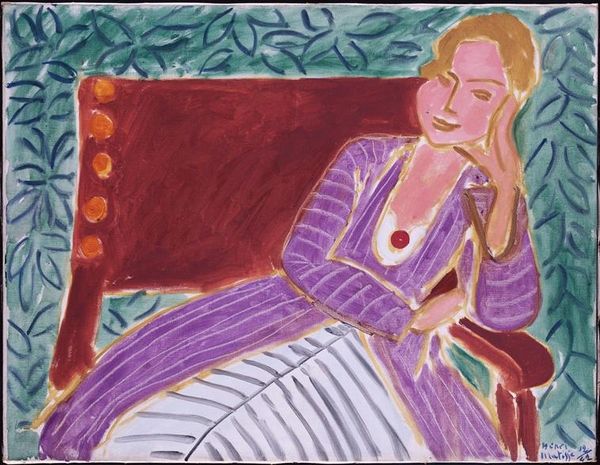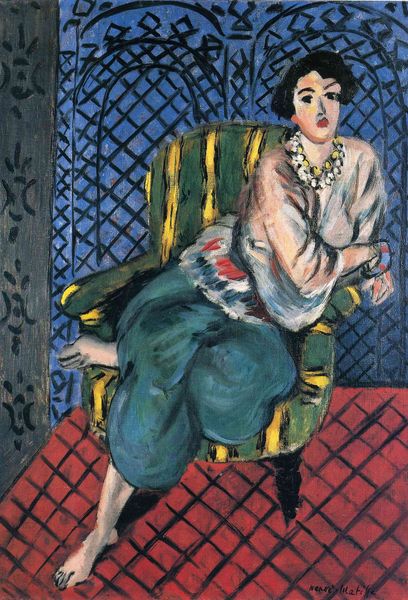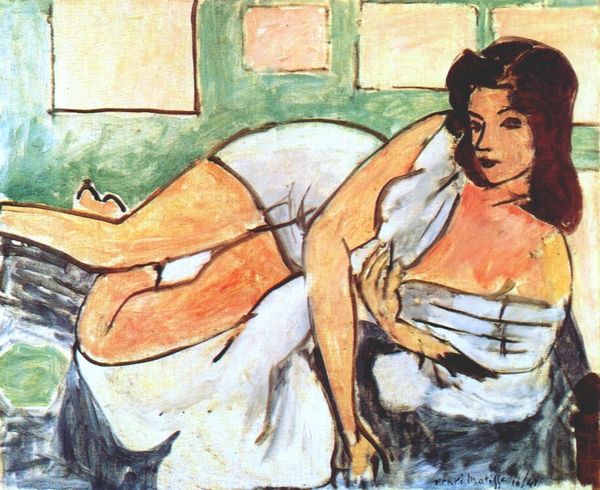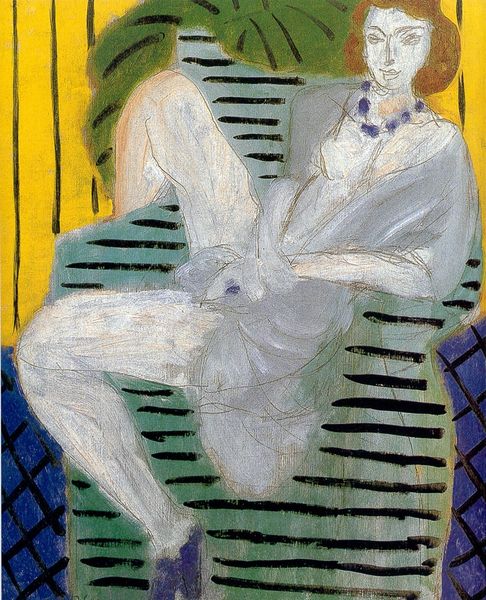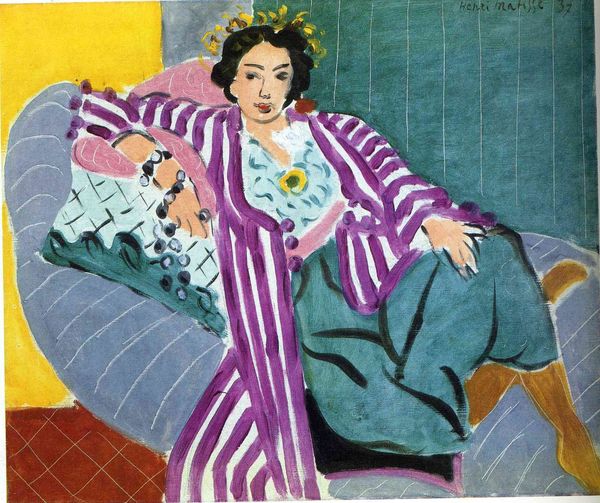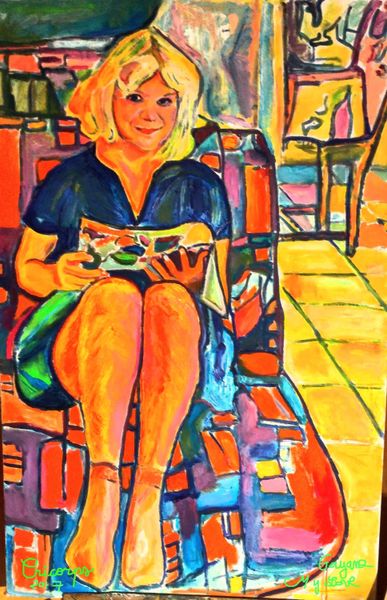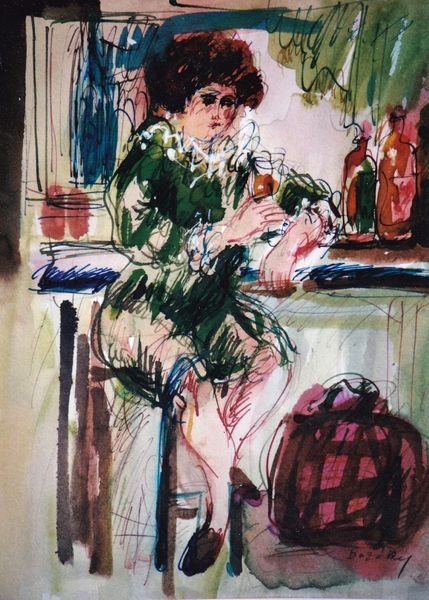
Copyright: Henri Matisse,Fair Use
Editor: Henri Matisse's "Dancer in Repose," created in 1940 using oil paint, has a certain disquieting energy for me. The pose seems casual, but the color palette, the flatness, makes it a bit jarring. What's your read on this composition? Curator: One can initially assess Matisse’s use of pictorial space, noting a departure from traditional perspective. How does the foreground, middle ground, and background interact? It’s evident that he has flattened these planes, prioritizing a two-dimensional interplay of forms. Consider the contrasting textures. Editor: Right, I see what you mean about the foreground and background being compressed. The textures are pretty interesting too. Like, the way the leaves are rendered next to the flat plane of the black background… Curator: Indeed. The use of black, traditionally a recessive color, when employed so dominantly challenges conventional spatial dynamics. The figure, whilst representational, is itself an arrangement of color blocks. It’s worth considering if the composition leads the eye toward one particular area, and why Matisse chose to emphasise it through these bold decisions. Do you find the title relates in any obvious way? Editor: I'm not entirely convinced by the title. “Dancer in Repose” suggests rest, but the intensity of the colors and flattened space create some tension... Perhaps the ‘repose’ is more of a visual harmony found in the colour interplay? Curator: A crucial observation! Semiotics are often helpful for that kind of interpretation. Your sensitivity to the nuanced interplay between representation and abstraction allows a further analysis of how it informs the very essence of modernist aesthetic principles. Editor: Thinking about the colours, I now consider their spatial impact too! The "flattened" parts seem like one of many decisions contributing to his overall compositional approach. Curator: Precisely, and through the arrangement of colour planes the emotional essence begins to subtly permeate throughout our perception.
Comments
No comments
Be the first to comment and join the conversation on the ultimate creative platform.
